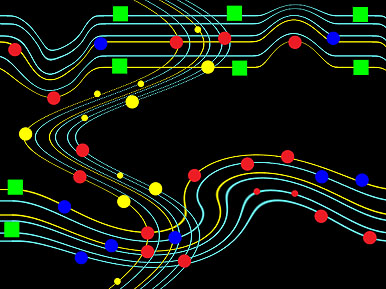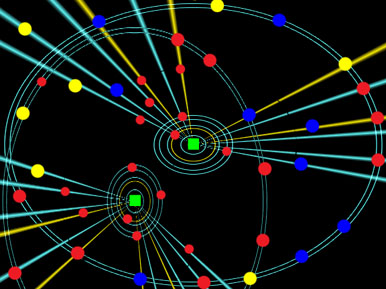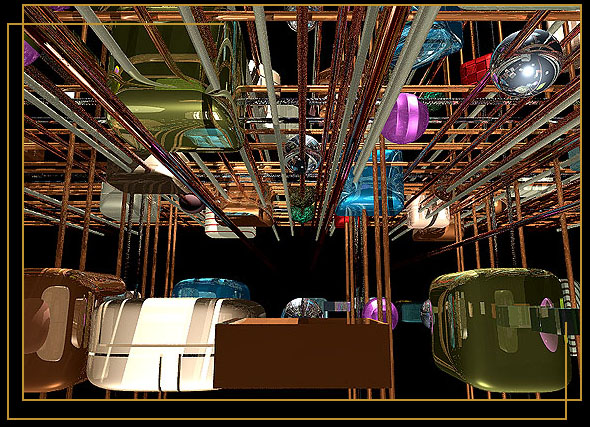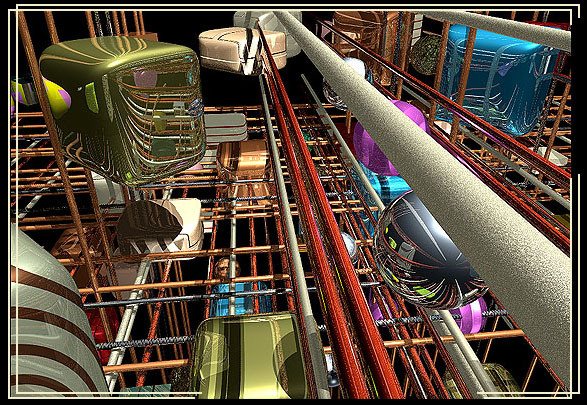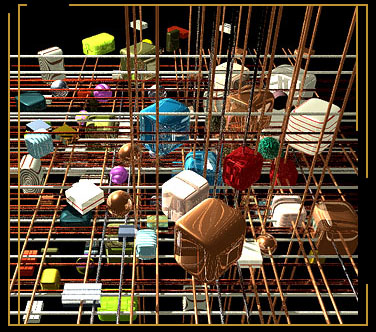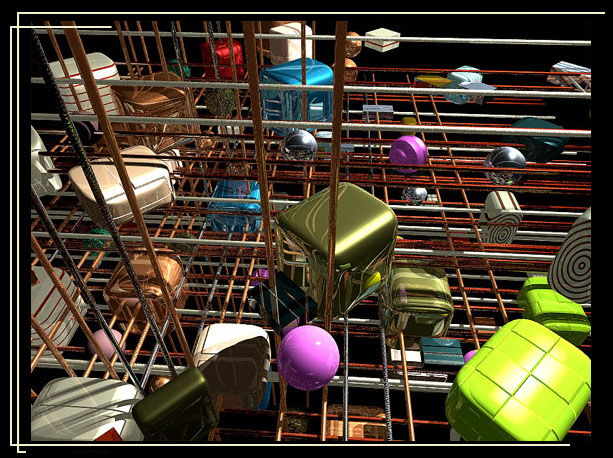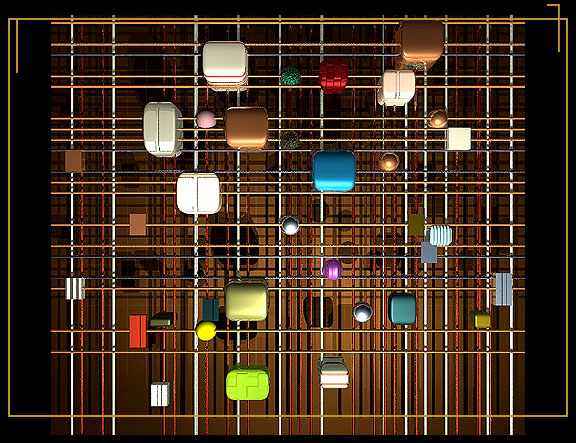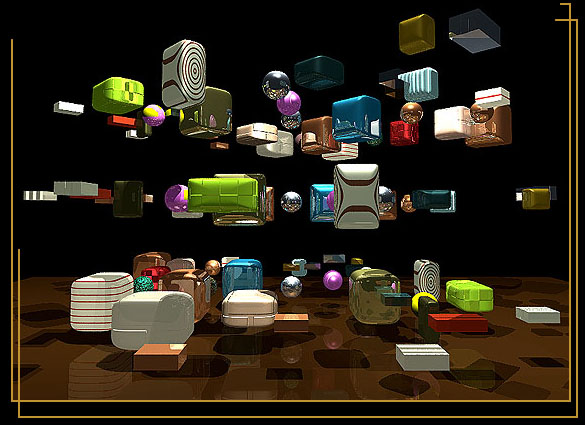 Whatever the power source, energy is dispersed throughout the comm unit on
every level through nodes, gates, and guides.
Whatever the power source, energy is dispersed throughout the comm unit on
every level through nodes, gates, and guides. 
 Schematics of power dispersal patterns from plasticine hooks.
Schematics of power dispersal patterns from plasticine hooks. 
 Plasticine models allow for free form power channeling, including morphing
on the fly, and so are favored by many assemblers specializing in power systems.
Plasticine models allow for free form power channeling, including morphing
on the fly, and so are favored by many assemblers specializing in power systems.

 Lines = energy flow. Guides may be conduits composed
of conducting and insulating materials or may be field lines which channel
flows inside their bounds.
Lines = energy flow. Guides may be conduits composed
of conducting and insulating materials or may be field lines which channel
flows inside their bounds. 
 Circles = exchange and augmentation nodes.
Circles = exchange and augmentation nodes.
Squares = relay stations analyzing input from sensors and chronometers.

 Now you're entering a place assemblers call home but rarely seen by most citizens.
Now you're entering a place assemblers call home but rarely seen by most citizens.

 Break open any subelement and you will find a number of interconnected nodules
which resemble the parent element.
Break open any subelement and you will find a number of interconnected nodules
which resemble the parent element. 
 Break open a nodule and you will see, with the aid of a grade 2 lens, layers
of tiny basic units. Here I've removed all but the lowest layer so you can
see the basic units and the grid of guides which connect them and also provides
communication between nodules and to their subelement's main exchange node.
Break open a nodule and you will see, with the aid of a grade 2 lens, layers
of tiny basic units. Here I've removed all but the lowest layer so you can
see the basic units and the grid of guides which connect them and also provides
communication between nodules and to their subelement's main exchange node.

 This sample is from a metallic hook comm unit so the
guides are metallic composites as are many of the basic units.
This sample is from a metallic hook comm unit so the
guides are metallic composites as are many of the basic units. 
 A side view with the guides removed shows you how the
tiny basics are arrayed in discrete levels which are connected only by the
grid.
A side view with the guides removed shows you how the
tiny basics are arrayed in discrete levels which are connected only by the
grid. 
 View from another side with guides restored. These guides
conduit ions for communication and empowering energy.
View from another side with guides restored. These guides
conduit ions for communication and empowering energy. 
 Basic units are switching nodes, power augmentation
stations, communication exchanges, thermal sensors, gyros, regulators, capacitors,
transceivers, and reserves.
Basic units are switching nodes, power augmentation
stations, communication exchanges, thermal sensors, gyros, regulators, capacitors,
transceivers, and reserves.
 If you broke open 1 of these sealed basic units you'd
see tiers of the familiar channels marked by gates and throats and switching
nodes.
If you broke open 1 of these sealed basic units you'd
see tiers of the familiar channels marked by gates and throats and switching
nodes. 
 And miniscule cantilevers for assessing shifts in temperature,
velocity, direction, pressure.
And miniscule cantilevers for assessing shifts in temperature,
velocity, direction, pressure. 
 Oscillating crystals suspended in their tensile nets
precisely measuring time.
Oscillating crystals suspended in their tensile nets
precisely measuring time. 
 Encapsulated liquids, tight coils, embedded storage
rods, busy bacteria, diamondite-generated pulses for teaming and beaming photons.
Encapsulated liquids, tight coils, embedded storage
rods, busy bacteria, diamondite-generated pulses for teaming and beaming photons.

 Sensors and chronometers monitor power needs and flow, sending and receiving
information constantly as they uphold functional quality.
Sensors and chronometers monitor power needs and flow, sending and receiving
information constantly as they uphold functional quality. 
view?

view?

view?

